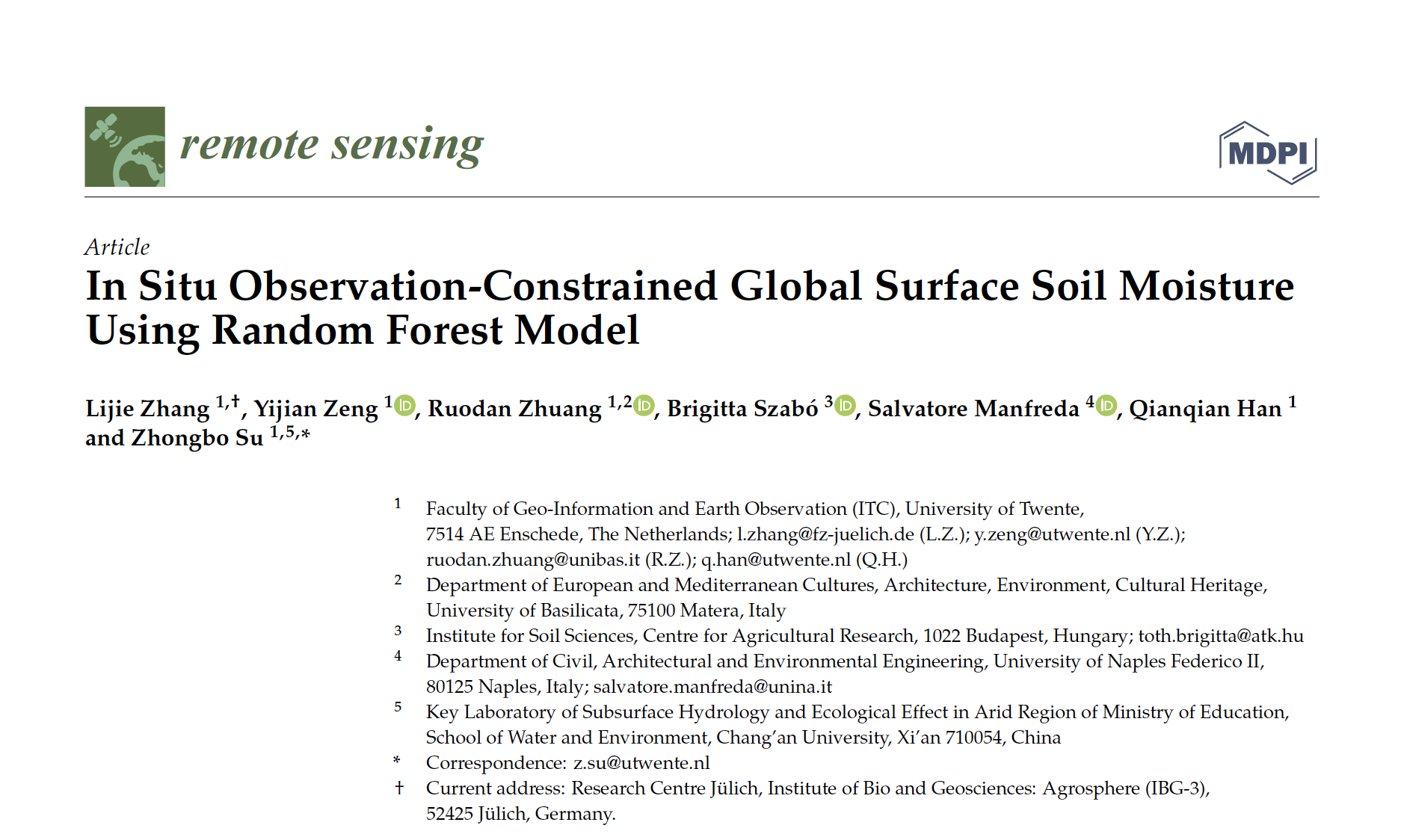The inherent biases of different long-term gridded surface soil moisture (SSM) products, unconstrained by the in situ observations, implies different spatio-temporal patterns. In this study, the Random Forest (RF) model was trained to predict SSM from relevant land surface feature variables (i.e., land surface temperature, vegetation indices, soil texture, and geographical information) and precipitation, based on the in situ soil moisture data of the International Soil Moisture Network (ISMN). The results of the RF model show an RMSE of 0.05 m3 m−3 and a correlation coefficient of 0.9. The calculated impurity-based feature importance indicates that the Antecedent Precipitation Index affects most of the predicted soil moisture. The geographical coordinates also significantly influence the prediction (i.e., RMSE was reduced to 0.03 m3 m−3 after considering geographical coordinates), followed by land surface temperature, vegetation indices, and soil texture. The spatio-temporal pattern of RF predicted SSM was compared with the European Space Agency Climate Change Initiative (ESA-CCI) soil moisture product, using both time-longitude and latitude diagrams. The results indicate that the RF SSM captures the spatial distribution and the daily, seasonal, and annual variabilities globally.
How to cite: Zhang, L.; Zeng, Y.; Zhuang, R.; Szabó, B.; Manfreda, S.; Han, Q.; Su, Z. In Situ Observation-Constrained Global Surface Soil Moisture Using Random Forest Model. Remote Sens. 2021, 13, 4893. [pdf]

